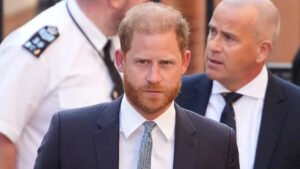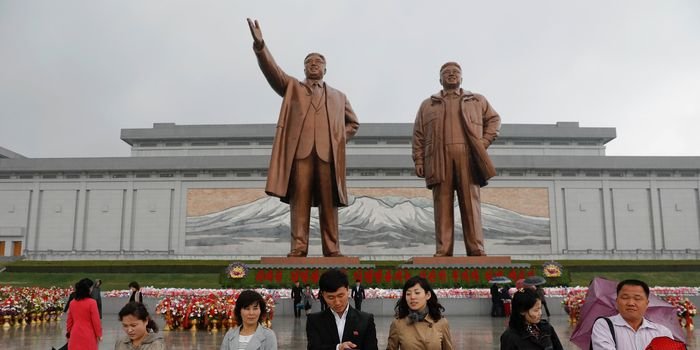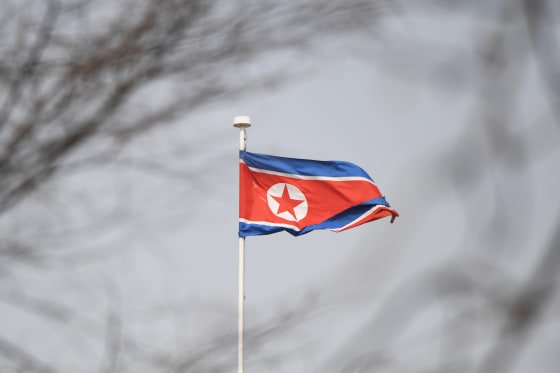Strict health measures, such as mask-wearing and temperature checks, are still routine, and popular tourist sites, including local markets, remain off-limits due to lingering fears of virus transmission.
Martell said that pandemic paranoia remains deeply entrenched in the Democratic People’s Republic of Korea (DPRK), as North Korea is officially known. He even encountered bizarre theories about the virus’s origins.
“There seems to be a rumor that COVID-19 got into the country via a balloon sent from South Korea,” said Martell, a Connecticut-born filmmaker who founded Pioneer Media, specializing in documenting unique and hard-to-access locations.
He was part of a small delegation of tour operators that visited North Korea last week to lay the groundwork for upcoming tourist trips.
After spending five days in North Korea laying the groundwork for the limited return of Western tourism, a small delegation of tour operators crossed the bitterly cold Tumen River Bridge back into China on Monday.
Martell and his fellow travelers—including Australian Rowan Beard of Young Pioneer Tours (YPT) and Hungarian Gerg Vaczi of Koryo Tours—are wasting no time.
On Thursday, they’re scheduled to start bringing small groups of Western tourists into Rason, a remote corner of North Korea near the borders of China and Russia. Tourists from Germany, France, the United Kingdom, Canada, Australia, Macao, and Jamaica are among those who have reserved spots.
Beard, who has led tours to North Korea for more than a decade, says the upcoming trips mark a significant step after years of perhaps the most extreme isolation that already-isolated North Koreans have ever experienced.
“I’m over the moon that the first group’s going this week,” said Beard.
“There’s a lot of enthusiasm on the ground,” he said. “But it’s a hard reboot. And it’ll take time to find that balance.”
He noted that key experiences, such as visiting the Rason market to haggle with locals using North Korean currency, are currently off-limits. Despite these setbacks, Beard remains optimistic, emphasizing that tourism outfits are in discussions with local ministries to restore access and rebuild trust step by step.
Beard noted that the North Korean bank account he opened in Rason more than a decade ago still had the same balance: about 25 Chinese yuan ($3.50).
During their visit, the tour operators discussed the possibility of adding a local movie theater experience to future itineraries. North Korea has recently revitalized its film industry under Kim Jong Un, with new releases such as Korean War dramas “72 Hours” and “One Day and One Night” playing in cinemas.
North Korea’s capital, Pyongyang, remains off-limits to Western visitors despite allowing Russian tourists access since last year amid deepening ties with Moscow.
Though the pandemic shut out all visitors, Americans had been barred from entering North Korea since long before the coronavirus pandemic. The US State Department imposed a travel ban on September 1, 2017, following the death of Otto Warmbier, a 22-year-old American student who was imprisoned in North Korea and returned home in a persistent vegetative state, dying shortly after.
Martell, who had visited North Korea 11 times by then, was in the country when the ban took effect.
“I was crossing the Sinuiju-Dandong border when it hit,” he recalled. “It made me, I think, the last American tourist on a US passport to leave the DPRK.”
Despite the ban, Martell remained committed to returning to North Korea.
“I didn’t want to stop coming,” he said. “I didn’t want the conversation to end.”
To bypass the US travel ban, Martell obtained dual citizenship from Saint Kitts and Nevis, a Caribbean nation known for its citizenship-by-investment program. By contributing a six-figure sum to the country’s Sustainable Island State Contribution fund, he said he secured a second passport, which legally allowed him to return to North Korea without violating US restrictions.
“It was about a year of paperwork,” he explained. “Background checks, financial disclosures — the whole nine yards.”
But since the start of the war in Ukraine, prices for citizenship-by-investment programs have surged, he added.
“Prices have doubled and tripled because of the number of Russians getting second passports,” said Martell. “It’s now up to $250,000. I paid a lot less than that.”
Despite the cost, he sees the investment as worthwhile.
“You have to really want to go,” he said. “But my advice is: if you’re going to spend the time and money, make sure the passport offers more than just access to North Korea. My Saint Kitts passport gets me into Russia visa-free — something my US passport can’t do.”
Beard says a “well-known” YouTube travel influencer is currently engaged in the similar process of obtaining a Spanish passport, at a price tag of nearly $200,000.
While US politics sparked conversation among the North Korean guides, the topic of Russia’s war in Ukraine was treated with silence — or careful omission.
Ukrainian and Western governments say Pyongyang has sent North Korean troops to fight on Russia’s side, with many units sustaining heavy losses.
Vaczi, the head of DPRK tours for Koryo Tours, observed the sensitivity around the subject.
“I had a guide who was incredibly knowledgeable about Eastern Europe,” he said, “but I didn’t bring up Ukraine. It felt like a line you don’t cross.”
However, Martell noted that North Korean guides were aware of global events, from the tariffs proposed by former President Donald Trump to the conflict in Ukraine. He found their perspectives more revealing in what they chose not to say than what they shared.
“We talked about geopolitics, but on Ukraine, they mostly listened,” he said. “It was a topic they approached with caution, even as they expressed support for Russia.”














